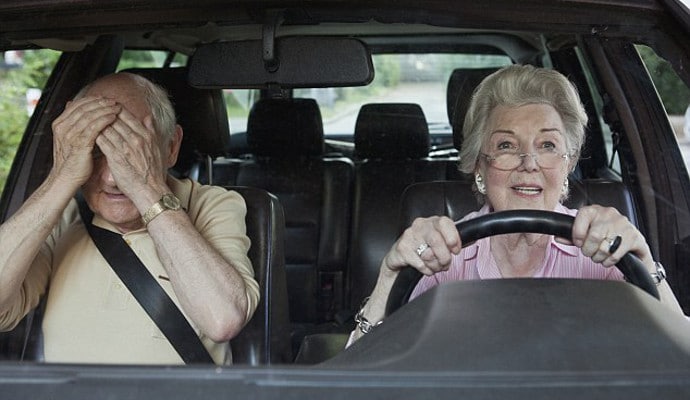
Seniors and driving. Know how to spot the signs when it’s time.
Sensitive Issue-Here’s How to Have the Talk about Senior Driving
Senior driving-it’s a touchy subject. You may be driving with mom or dad and notice something is off. Or receive a call like my sister did where mom was lost in her own neighborhood.
Elders and driving-it’s a touchy subject. You may be driving with mom or dad and notice something is off. Or receive a call like my sister did where mom was lost in her own neighborhood. Maybe mom has bumped into a few trash cans on the street and amusingly told you about them. All of these are warning signs of course.
Triple AAA notes these facts about senior driving on their web site.
- Fifty percent of the middle-aged population and 80 percent of people in their 70s suffer from arthritis, which makes turning, flexing and twisting painful.
- More than 75 percent of drivers age 65 or older report using one or more medications, but less than one-third acknowledged awareness of the potential impact of the medications on driving performance.
- Fatal crash rates increase beginning at age 75 and rise sharply after age 80.
What if I told you that tomorrow, just for a day, you would all of a sudden not have a car available? What if I said a week? You can start to see how your independence would be affected.
A car represents different things to people…a way to get to places for some…status and identity…freedom and spontaneity. What it represents also says a lot about how you approach the situation.
How can you tell when a person is starting to have problems?
- The best thing is to observe directly.
- Distinguish between serious signs of trouble and less so. For example, confusing the gas with the brake is serious. Riding the brake maybe less so. If serious take immediate action. If less so, observe over time, take notes and look for a consistent pattern. These facts will help when having a conversation.
- Things to look for include:
- Struggling to change lanes
- Problems turning particularly left turns
- Driving too slow or too fast
- Reaction time
- Other drivers honking
- Hitting curbs
- Following signals
- Scrapes on cars
- Often older adults will start self-correcting, not driving at night, in bad weather, on freeways. My mom started going places by making all right hand turns. Praise these behaviors but also take them as a sign that things might be changing.
- Check in with their friends, as they may know more than you do. Have they gotten lost, had near accidents.
- Check with their physician or pharmacist as medication changes can impact driving.
How do you start the conversation?
Ideally you start a conversation over time not in a crisis situation.
You should initiate casual conversations. Look for an opening in something they say as well. Example, say you are watching the news and they are reporting on an accident. Or perhaps the weather is turning bad. You could say to mom or dad something about the dangers of that particular interstate and how if it were you, you would consider alternate routes. Or in regards to the weather, remark that it really isn’t the best idea to drive in an type of inclement weather.
Have empathy. Validate their emotions and go back to why a car is important for them. So for example if it is to get places, then have a plan in place for alternative transportation. If it is about status and identity, have the car parked at their house and let others use it to drive them. If it is about freedom and spontaneity, plan spur of the moment trips.
First seek to see if there is a way to keep the person behind the wheel.
Make modifications –
- Stop driving at night.
- Avoiding freeways and interstates.
- Stop driving in bad weather.
- Designate places they can drive safely and easily.
